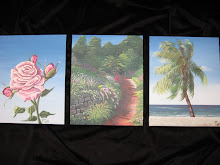For instance, if you wish to paint your room blue possible shades that await you include: azure, cerulean, periwinkle, denim, navy blue, cobalt blue, sapphire, ultramarine, light blue, indigo and hundreds of other hues.
Something else you will notice when looking at blue paint swatches, for example, is that you can choose blue hues that feature tones of green, purple and gray. Therefore, you have plenty to consider when you go color hunting.
The only problem is, with so much to choose from, finding the right shade can be both a difficult and tedious task.
To help you narrow down your decision making when it comes time to stare at the wall of paint swatches at your local paint or home improvement store, the following are some helpful interior painting tips you can keep in mind:
Warm or Cool – Think of the room you will be painting. Is it an area where you do most of your relaxing, entertaining or eating? For instance, if you are painting your bedroom it’s a good idea to choose a cool color such as blue or green that encourages relaxation.
On the other hand, if you are painting a kitchen or dining room you may want to use a warm red or orange to help increase appetite and conversation. Warm colored paint swatches include red, yellow and orange, while cool colors are blue, green and purple.
Light - Medium -Dark – Once you select the main color, you need to decide if you would rather a light, medium or dark shade. Light shades are a good choice for rooms that are small such as bathrooms, or for rooms that have few or no windows. Light colors also create a more subdued look.
Medium tones provide a more dramatic look and are a better choice for kitchens and large open spaces such as the family room.
Dark tones are not typically used for walls and are more commonly used for painting room accents such as furniture, trim or cabinets. However, dark walls may be desirable in bedrooms or to compliment a theme.
When looking at paint swatches you will notice that the colors featured on each swatch move from dark to light. Notice how different the darkest shade is to the lightest. Depending on if you use the dark or light shade will create an entirely different affect on the room you are painting.
Theme – Do you have a theme that requires certain colors? For instance, if you are doing a country theme, light yellow and blue are ideal choices. On the other hand, a Mexican theme would require spicier colors such as cinnamon and terracotta. This is something else you need to keep in mind when looking at paint swatches.
Neutrals – One of the biggest problems with adding color to walls is the color you choose may limit your ability to keep a space versatile. In other words, it is more likely for you to grow tired of a room that has a defined color on the walls than one with a neutral shade. There are plenty of neutral swatches you can consider.
The more specific you are with your color preference the easier time you will have selecting helpful paint swatches.
About Author:
Michael Holland is the creator of home-decorating-made-easy.com. Visit his site for more great information about interior paint colors
Article Source: http://www.isnare.com/
Featured Video:
How to Choose a Color Scheme & Paint: Interior Design & Painting Tips : Pt. 2 - Making a Color Diagram: Interior Design & Painting Tips
Part 2 - Learn how to make a diagram of the color scheme for your home. Get painting tips for walls & ceilings in this free home improvement video.
(Part 1 is featured on Monday, March 24, 2008)
 WallDreams Paint Ideas!
WallDreams Paint Ideas!What's in a paint chip name, anyway?
You've seen them:
Sherwin Williams' Bagel, Loveable, Elation, Impetuous, Sequin, and Spun Sugar.
Benjamin Moore's King Arthur's Court, Cat's Meow, Jack and the Beanstalk, and Fun 'n Games.
What color is a Cat's Meow anyway? The name doesn't give us a clue as to what it really is but it sounds kind of cute, right?
It's all about the marketing and naming something so that it sells. Whether the name sounds tantalizingly delicious, catchy, or quirky the name doesn't matter a hoot once it's up on your wall. It will still be a form of red, blue, green, yellow, white, black, purple, pink, beige, etc. Don't let a name detract you from your color choice.
A "Lemon Chiffon" at one store will not be the same at another store.
There is no standard color naming scheme across the different paint manufacturer's nor are their sheen levels exact. If you try to match a color from one paint or home store, at another paint shop you probably will not match the color precisely.
Tips:
If you find you are running out of paint, stop at the nearest edge or corner, even if you are buying more paint from where you purchased the original color. Slight variations can and do occur.
When using more than one gallon of the same paint, box them. This means get a large bucket and pour all the same paint together, mixing well. This eliminates any color discrepancies. Keep the pail covered between paint tray pourings as it is air's job is to dry the paint wherever it finds it.














No comments:
Post a Comment